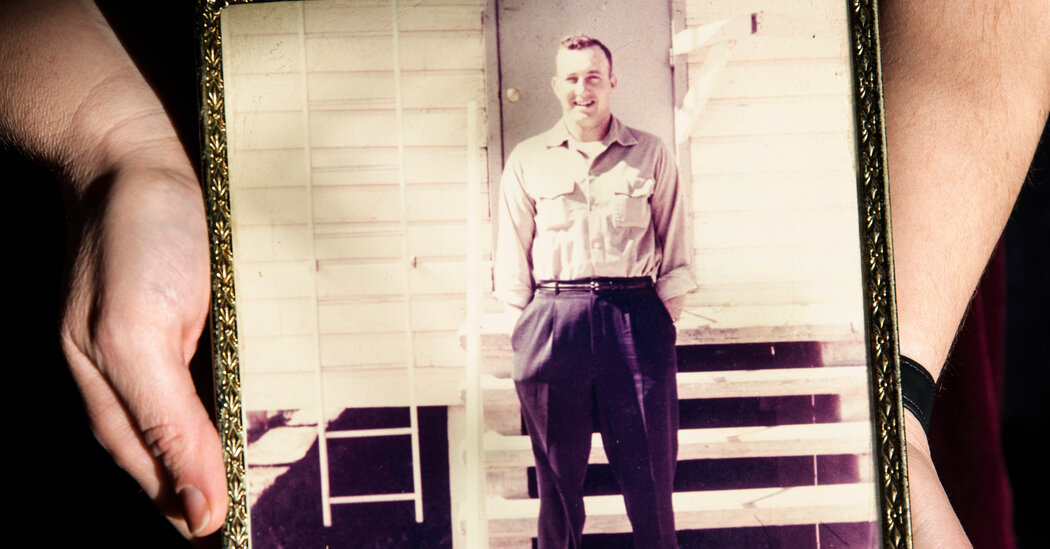
Maybe it was because Kerri Raissian’s father had spent time in two hospitals and a nursing facility during the last 12 days of his life. Or maybe it was because he had been in the emergency room for only a few hours before he died. Either way, Covid-19 was not listed on his death certificate.
Ms. Raissian has spent the last month trying to change that.
At stake are thousands of dollars from a program run by the Federal Emergency Management Agency meant to ease the financial burden on grieving families that lost loved ones to the pandemic. The government will reimburse up to $9,000 in funeral expenses for people who die from the coronavirus — as long as there is proper documentation.
“I understand the need for FEMA to guard against fraud, which is what this death certificate criteria is meant to do,” said Ms. Raissian, an associate professor of public policy at the University of Connecticut, who has spent hours on the phone trying to retrieve her father’s medical files and speak to the doctor who certified his death.
But the strict requirements and the chaos surrounding so many deaths pose a problem, she said: “This policy all but guarantees many people who are entitled to these benefits will not get them.”
More than 900,000 Covid-related deaths have been reported in the United States, but fewer than half have been the subject of a claim, according to FEMA data. Roughly 273,000 applicants had been paid, for a total of $1.78 billion, as of Monday.
There is no deadline to apply, so eligible families can still claim the assistance. But that can mean navigating requirements for documents that aren’t always simple to obtain.
It hasn’t been easy for Ms. Raissian, who is trying to recoup some of the $13,000 it took to bury her father, Max McGaughey. Mr. McGaughey, 86, died just after Christmas, less than two weeks after he was admitted to a hospital in Columbus, Texas, with Covid-19. He was discharged to a skilled nursing facility, but was rushed to a hospital in Katy when his oxygen levels crashed. He died of a heart attack a few hours later.
But Covid-19 wasn’t listed on Mr. McGaughey’s death certificate, an oversight that his daughter has been trying to correct by getting the appropriate documentation from his doctors at the first hospital and the nursing facility so she can send it to the hospital where he died. Then the certificate can be updated through the Texas Department of State Health Services.
“It is bureaucratic and it prevents closure, but also we really need the death benefits,” Ms. Raissian said.
The median cost of a funeral was nearly $8,000 in 2021, according to the National Funeral Directors Association. That is a heavy financial burden, particularly for lower-income families, which have been hardest hit by the pandemic, or those dealing with the expense far sooner than they had expected.
Ellen Wynn McBrayer, president of Jones-Wynn Funeral Homes & Crematory near Atlanta, helped a woman with two young children plan the funeral for her husband, who died from the virus. The reimbursement program made the sudden expenses easier to afford.
“A young family doesn’t really plan for end of life,” Mrs. Wynn McBrayer said. “They will be able to have a headstone to visit on their dad’s grave. It was a huge blessing in the midst of the storm.”
FEMA said nearly 415,000 people had applied for funeral assistance. Roughly 97 percent of those who provided all documentation had been approved as of Feb. 2, the agency said.
Jaclyn Rothenberg, FEMA’s director of public affairs, acknowledged that some families have hit stumbling blocks, but said the government agency is responsible for doing its due diligence.
“We are always looking for ways to improve our process and make it easier for applicants especially during these difficult moments,” she said. FEMA has also hired a contractor to help better communicate what the program is about and how it works, Ms. Rothenberg added.
Applicants can smooth the process by having all the required paperwork ready when they apply, which begins with a phone call to FEMA. To file an application, a person must be a U.S. citizen, a noncitizen national or a qualified alien. The deceased person does not need to meet those requirements, but must have died in the United States or one of its territories.
To qualify, the expenses must have been incurred after Jan. 20, 2020. All expenses for a deceased individual should be included on the same application, FEMA said. If multiple people paid expenses, one should file the application but include the expense documentation for everyone who contributed. (A co-applicant is permitted.) Reimbursements are capped at $35,500 if you lost multiple loved ones.
Death certificates issued after May 16, 2020, must list Covid-19 as a direct or indirect cause. For coronavirus deaths before that — when there was less testing early in the pandemic — there’s more flexibility: Applicants can provide a signed statement explaining the connection from the original certifier of the death (or the medical examiner or coroner where the person died).
The program will not reimburse for bills paid with assistance from another source, such as prepaid funeral contracts or burial and funeral insurance. But applicants may still be eligible for FEMA assistance if those sources didn’t cover all costs.
Dealing with paperwork in the throes of emotional trauma is difficult, but keeping clear records can ease the application process. Mrs. Wynn McBrayer, the funeral home director, said survivors who intended to apply for the program should be careful to use their full legal name on receipts to match what would be used on the application.
“It is a blessing,” she said of the assistance, “if you can find a blessing in the rubble.”
Karen Bopp, who lost her 94-year-old mother to Covid last year, learned about the program through an email from her U.S. representative that arrived just hours before her mother died. Ms. Bopp’s mother, Mary, died of a heart condition exacerbated by the coronavirus nearly four months after testing positive on Christmas.
“We didn’t want to put her in the hospital because there were all of these stories of saying goodbye on a Zoom call, so we kept her at home,” Ms. Bopp said, adding that her son, Tyler, handled most of the caregiving. “The Covid thing was a real shocker. She wasn’t ready to go.”
Before she even applied, Ms. Bopp had to correct the death certificate; it listed diastolic heart failure as a cause of death, not Covid-19. That may have been the easiest hurdle to overcome — her mother’s hospice care provider quickly addressed the problem.
Ms. Bopp began the application process in late April, but she wasn’t reimbursed until October — much longer than the roughly 70 days that FEMA said was the median time from application to an eligibility decision.
Even with the corrected death certificate, she said, FEMA initially rejected the claim because the agency couldn’t find Covid listed as a cause. There were other hurdles: After settling a problem with a hard-to-read burial receipt, there was an issue with the receipt for the coffin.
Ms. Bopp’s mother, a Catholic, had requested that it be made by an order of Benedictine monks that had produced a coffin for a friend’s funeral. Ms. Bopp had to call the abbey and eventually coordinated a conference call with its business manager and FEMA. The problem took more than a month to resolve.
“I have correspondence with at least 15 if not 20 people of having submitted documentation and having it rejected,” said Ms. Bopp, a reading and math interventionist in an elementary school in Illinois.
After more than four months of back and forth — Ms. Bopp said she had logged into her FEMA account more than 31 times — she was reimbursed for the full cost of the funeral, about $8,000.
The money arrived within a couple of weeks, and Ms. Bopp was able to repay a home-equity loan that her mother had taken out and that the family had used to pay the funeral expenses. With the loan paid off, the family was able to settle her mother’s estate.
“The process was way more difficult and time consuming than we had anticipated,” Ms. Bopp said, “so it was a great relief to be able to finalize everything.”




